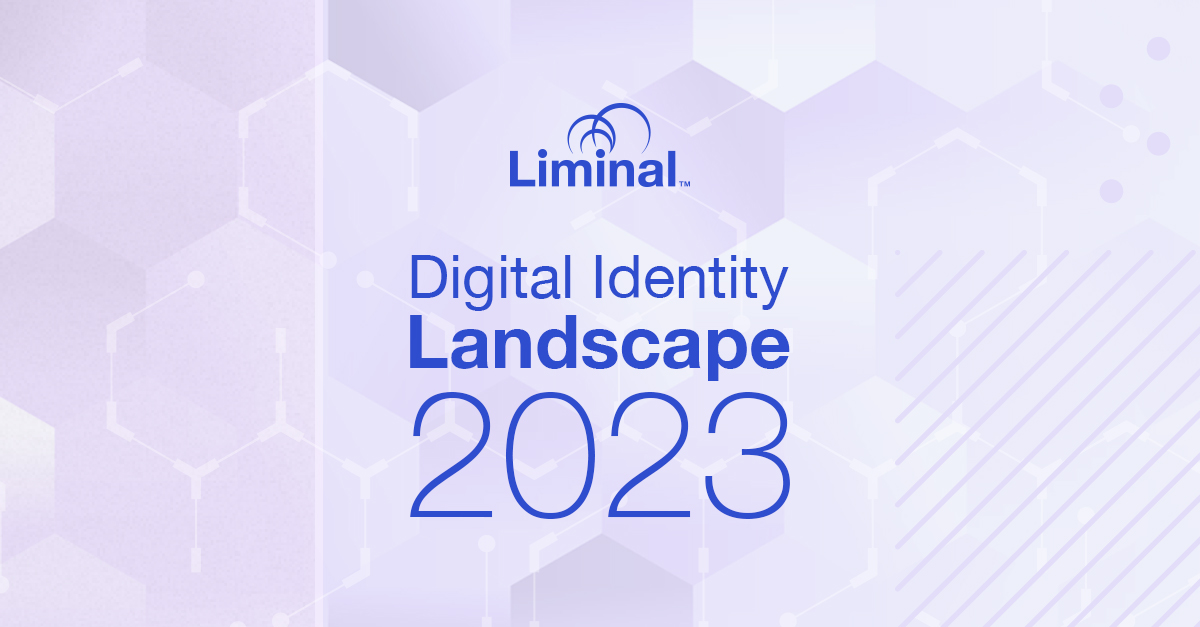
We’ve seen significant progress in the digital identity market over the last year regarding technological advancements and business model innovations. Many new product managers and business owners across verticals and geographies began leveraging digital identity products to create new and better experiences, improve security, and reduce fraud risk. These new buyers prefer full-stack and platform solutions over better point solutions – a significant shift in buying behavior that many observers of this space have correctly predicted over the last few years. This year’s Liminal Digital Identity Landscape reflects the most recent developments in product development and go-to-market strategy.
Every year, we reassess every aspect of the Digital Identity Landscape. We use a series of internal workshops to discuss and debate the product features that makeup solution segments and market shifts that necessitate landscape solution segments. Technological, regulatory, process-oriented, investment-related, and product-market awareness are the major shifts and influences on the landscape. Following our internal workshops, we solicit feedback from more than 100 trusted advisors and industry experts. The experts’ contributions enable us to create a final version of the new landscape map.
The Liminal Digital Identity Landscape is a framework for creative exploration and a tool for decision-making. We purposefully left logos out of the landscape to reduce noise and complexity.
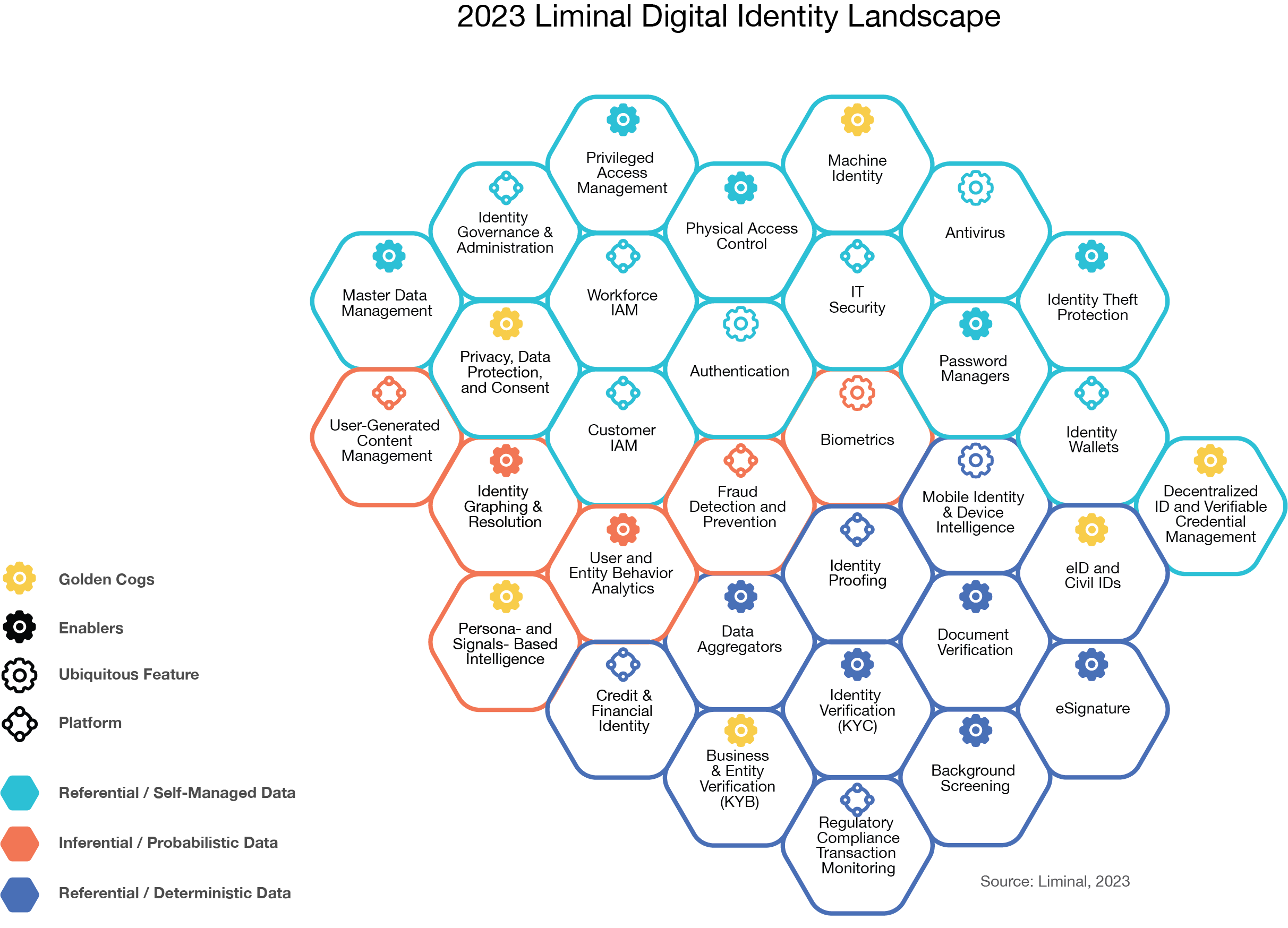
Explore the 2023 Liminal Digital Identity Landscape
This year, the landscape includes 32 segments, up from 31 last year, with two new ones added and two segments combined. Our product feature-to-segment mapping process discovered more than 120 new product features across all segments not included in the previous year’s landscape, including features associated with the two new segments. This year has also seen a shift in many solution segment types. The Digital Identity Landscape now includes:
- Ten platforms down from 11
- 12 enablers up from 7
- Four ubiquitous features down from 6
- Six golden cogs down from 7
There are five notable changes in 2023 from 2022:
1. A new solution segment was added: Decentralized Identity and Verifiable Credential Management (DID/VCM)
We’ve been following companies in the DID/VCM space for a few years and believe the time has come to separate it as its own solution segment. Previously, verifiable credential management was a product feature within the Identity Wallet segment; however, we believe there has been sufficient traction in this area to warrant its segment. This segment was created to highlight the technological differences between DID/VCM and Identity Wallets. Identity Wallets are how you can “carry” your credential with you. DID/VCM applications, on the other hand, are the infrastructure that enables verified credentials to be issued and verified following W3C decentralized identity standards.
We believe that the dominant data type in the DID/VCM solution segment is referential / self-managed, and we’ve designated it a Golden Cog because of its potential disruptive power.
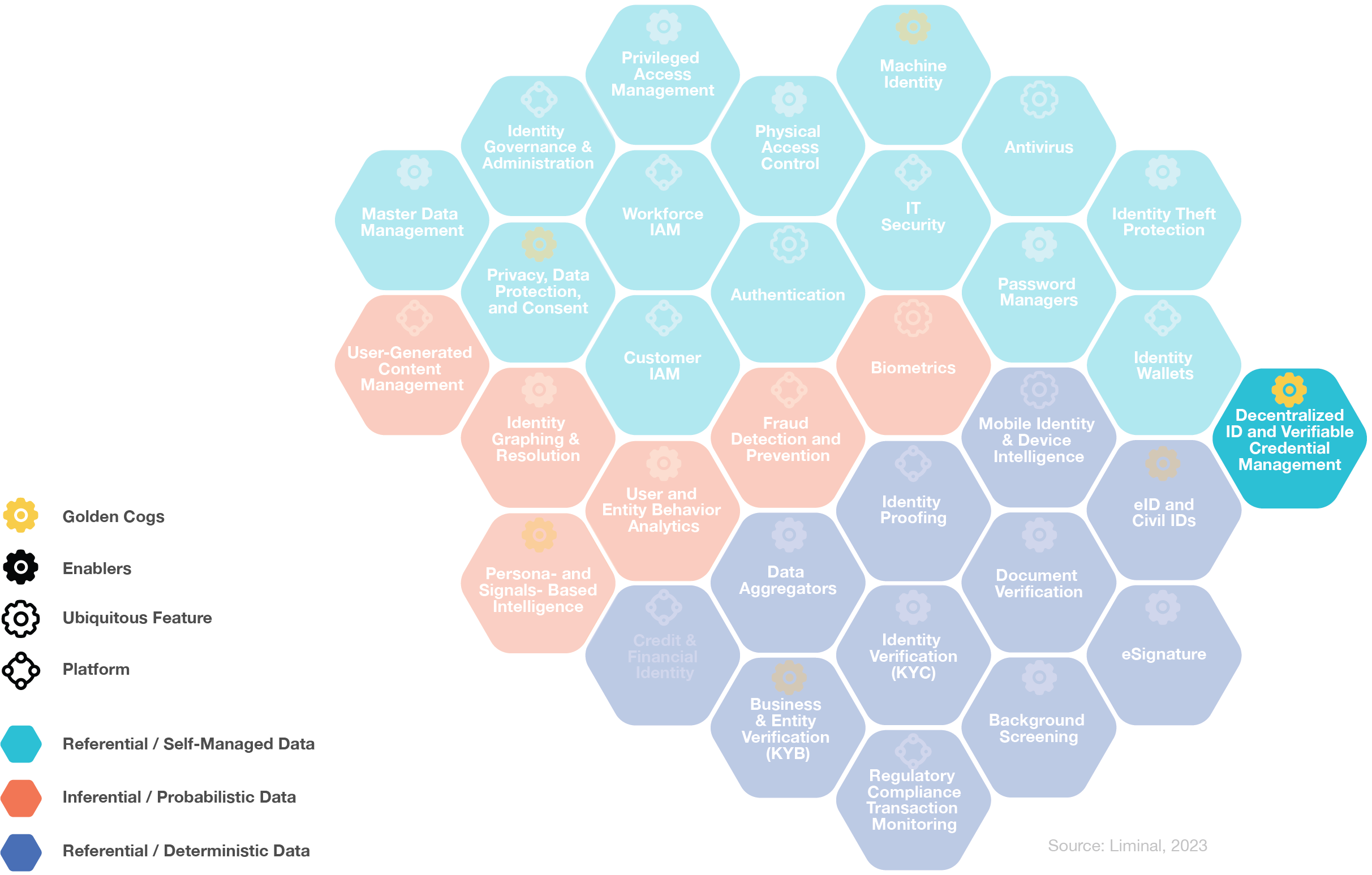
2. A new solution segment was added: Persona- and Signals-Based Intelligence
Over the last year, we’ve engaged in several discussions and projects related to solving the age assurance challenge. Age assurance has increasingly become a hot topic in content generation, video streaming, and e-commerce companies related to the sales of age-restricted items or access to age-restricted content. Age self-attestation (Age gating) no longer meets everyone’s expectations of age assurance, and new solutions are needed to effectively verify someone’s age without adding onerous friction to the system.
Why didn’t you call the segment Age Assurance? Good question; I’m glad you asked. Persona- and Signals-Based Intelligence extend well beyond age assurance. Liminal is finding companies and services that improve upon the analysis of inbound users by applying AI to client data to arrive at a set of personas – ideal types of expected ‘good’ and ‘bad’ users. In the case of age assurance, one can imagine known good persona types of ‘adult’ and ‘child’ and a bad persona type of ‘child lying about their age.’ When a user lands on a site or an app, they are compared against the known personas in combination with signals – metadata, IP address, time of day, device characteristics, and so on – to determine if the user matches the profile or not. This allows less personal data to be gathered and reduces friction for truthful users. As you might have guessed, this method is useful for more than just age assurance – it is applied in fraud detection broadly and can be applied to other forms of user segmentation.
We believe that the dominant data type in the Persona- and Signals-Based Intelligence solution segment is inferential / probabilistic. We’ve designated it a Golden Cog because of its applicability across use cases and verticals.
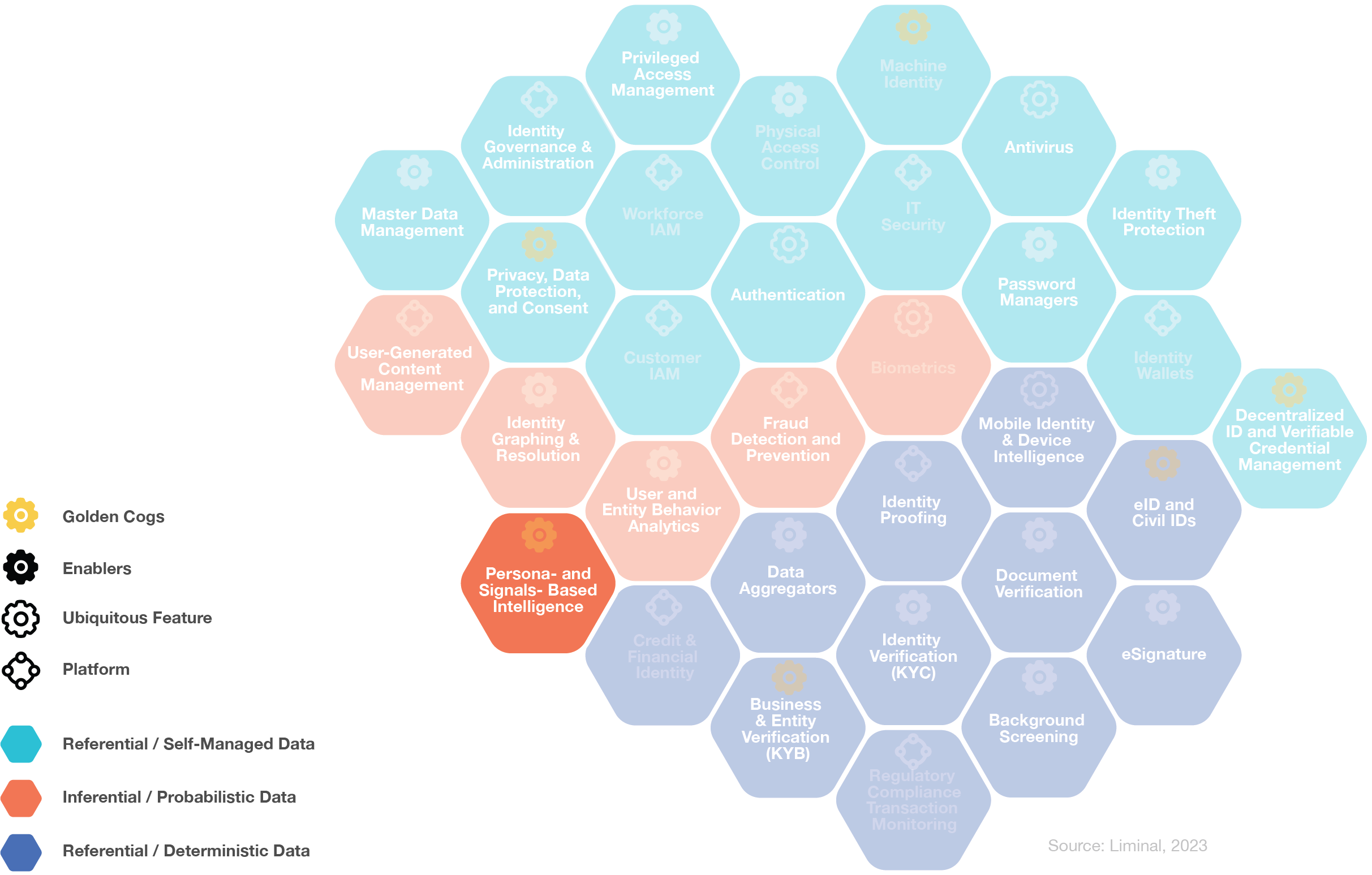
3. A new solution segment was formed: Network Security and Endpoint Security segments were combined into what is now called IT Security
There was significant overlap and blurring between the two segments, so we combined them into a single general information technology security segment. This is especially true as workforces appear to be in a permanent hybrid state, with a growing proportion of workers fully remote. Today’s network extends far beyond the enterprise’s “four walls,” necessitating a more comprehensive security posture.
The consolidated solution segment IT Security combined two platform segments and will remain a platform solution within the referential / self-managed data type.
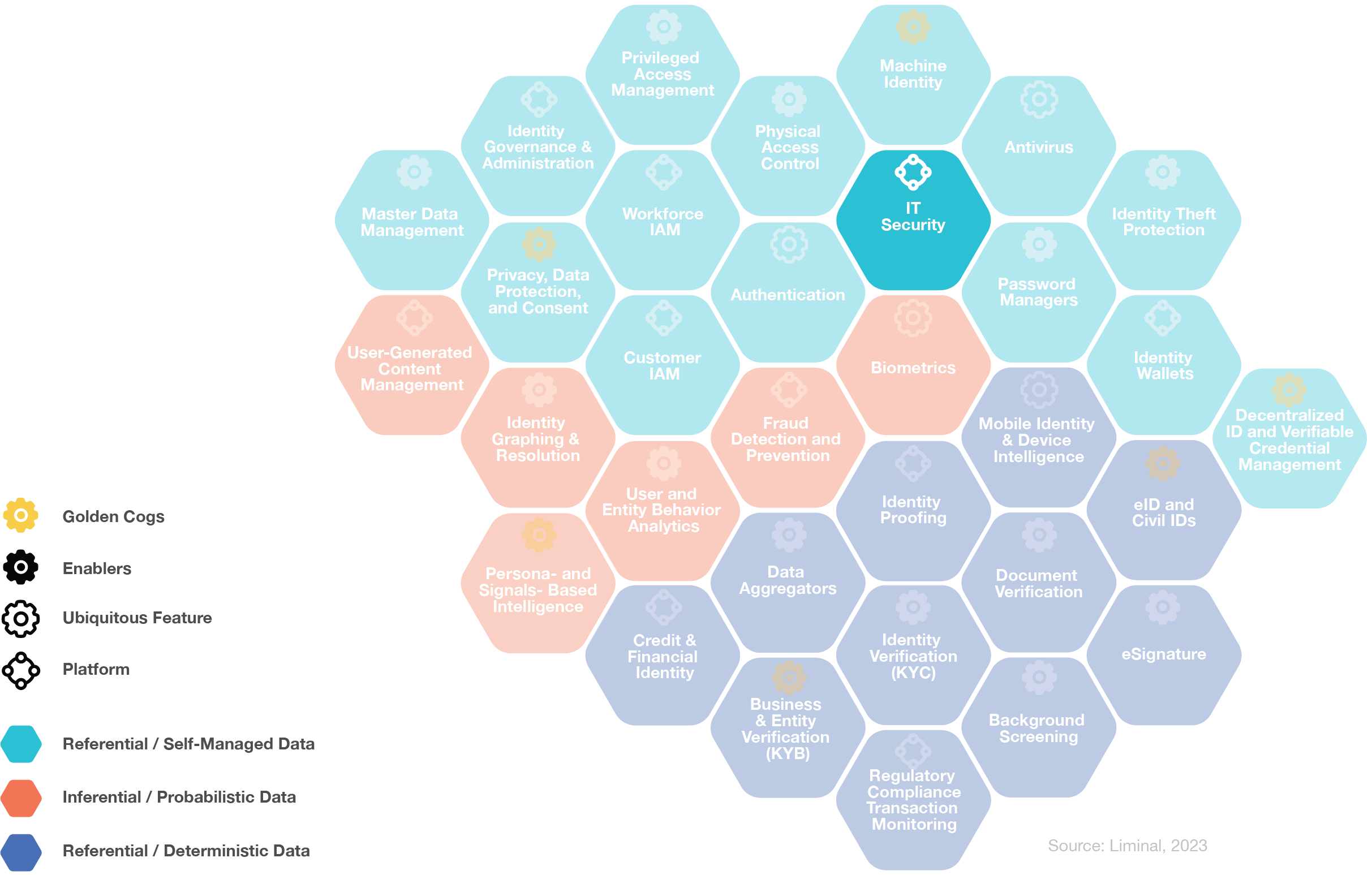
4. A current solution segment was moved: User and Entity Behavior Analytics (UEBA) moved across the landscape to reflect better its influence on Customer Identity Access Management (CIAM), Fraud Detection and Prevention, and Persona-Based Assertions.
Over the years, UEBA has shifted around the landscape as solution providers collaborated with several other product features to develop killer use cases. UEBA benefits from and is hindered by its ability to improve most digital identity solutions across the customer journey as a versatile set of product features.
We believe that the dominant data type in the UEBA solution segment is inferential / probabilistic, and we’ve downgraded it from Golden Cog to enabler. Over time, we expect this segment to become a ubiquitous feature. Related content: Top 7 Predictions for Digital Identity Market in 2023.
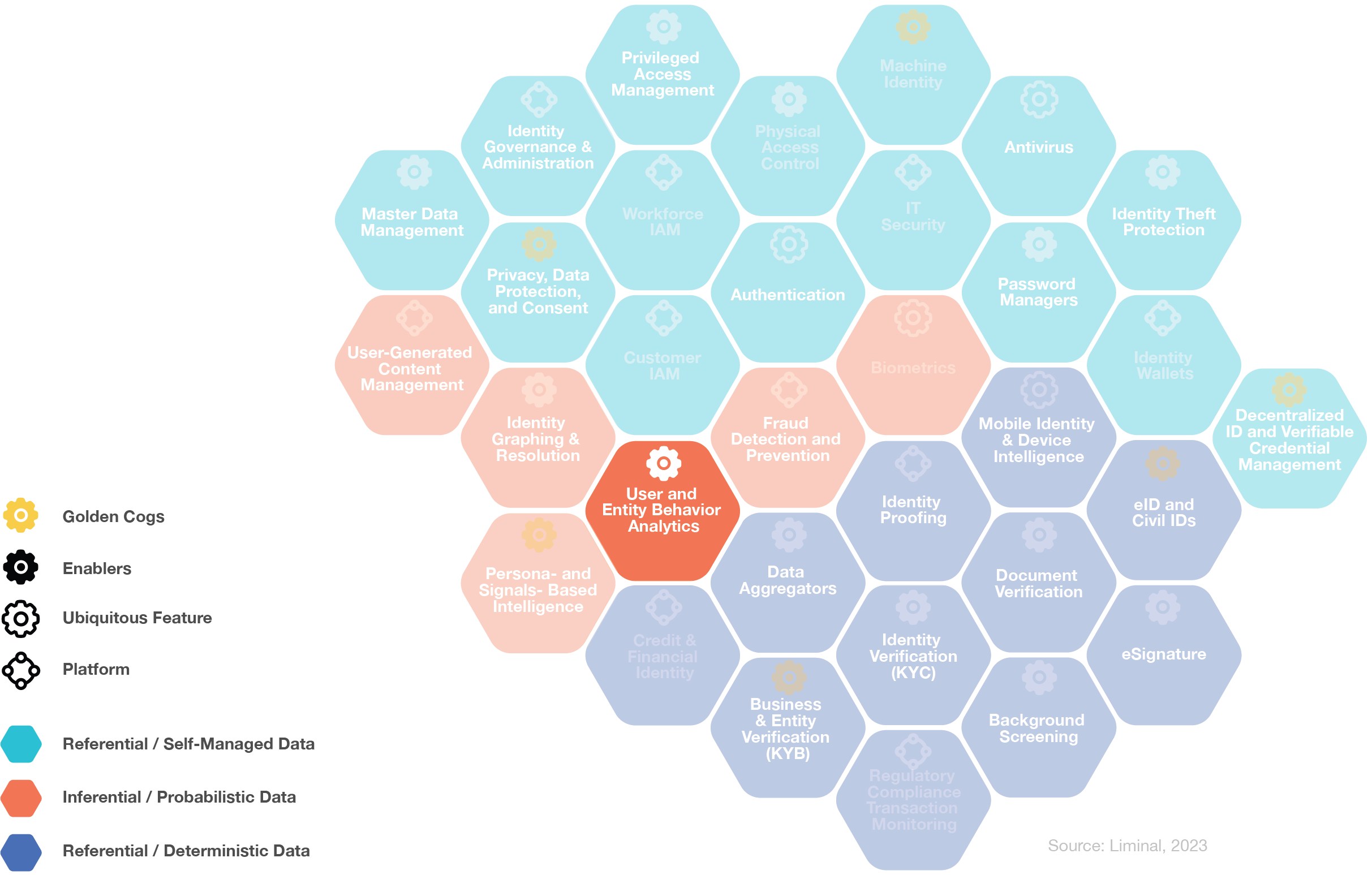
5. Some solution segment titles were updated
We updated three segment titles to clarify and align them more closely with market-defined terms.
- Removed “Identity Networks” from eID and Civil IDs
- Renamed Identity of Things to Machine Identity
- Data Privacy and Consent Management was retitled Privacy, Data Protection, and Consent
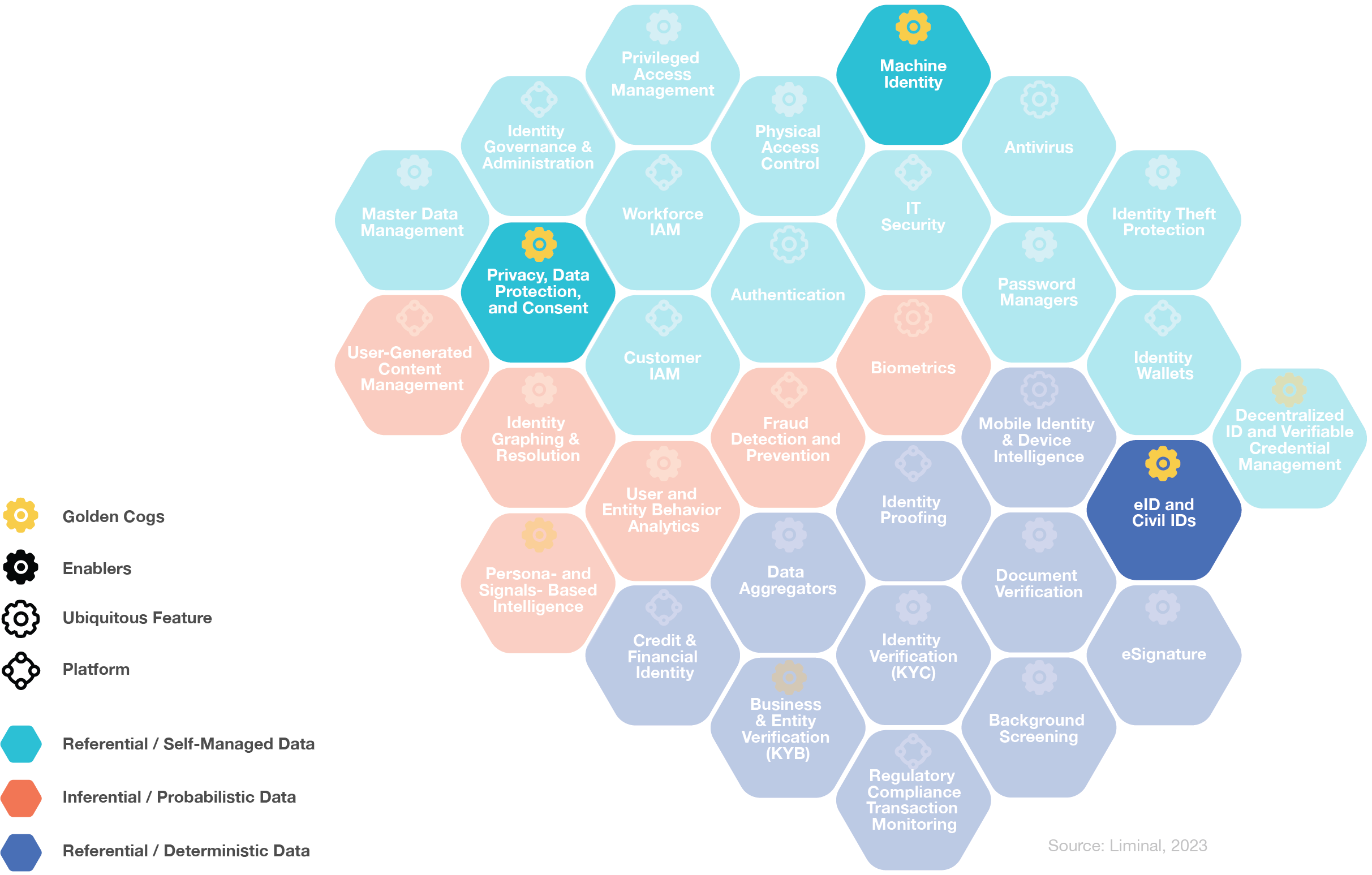
What’s Next?
As the market changes, we update the Digital Identity Landscape. Our goal is to provide significant updates around this time each year to help you develop your strategy. We will deliver videos, blogs and podcasts in the coming days, weeks, and months to provide you with more trends and insights from the 2023 Digital Identity Landscape and critical market shifts.
Related content:
- Subscribe to our newsletter and receive updates, research, events, and more news.
- Listen to our State of the Identity podcast, and hear from global leaders in digital identity
- Watch our Investing in Identity video series to get insights into M&A, funding, and market activity
Contact us here if you have any questions or want to learn more about how we can help your business.


